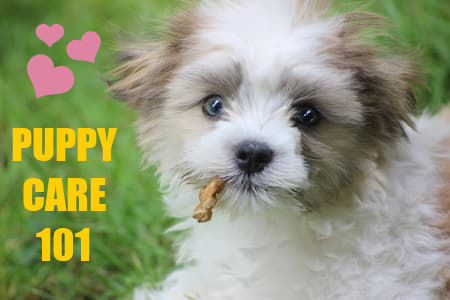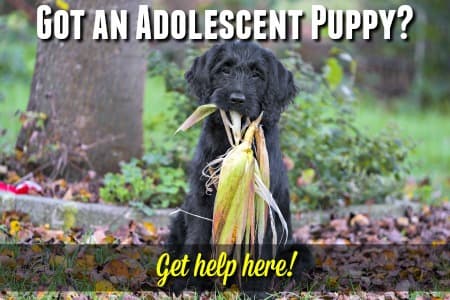FYI: If you buy something through a link on this site I may earn a commission - at NO extra cost to you.
Introducing A New Puppy To Your Dog
When you're introducing a new puppy to the resident four-legged family members there are no guarantees that they're going to find him quite as adorable as you do - at least not immediately!
Depending on the age and personality of your resident dog/s, the newcomer may be welcomed to the family with happy licks and play-bows... but it's equally likely that he'll treated with suspicion and maybe a touch of jealousy to begin with.
But don't worry, this is perfectly normal behavior and chances are good that within a few days the two (or more) of them will be best friends. Let's take a look at the steps you can take to make sure of this 'happy ending' and even speed up the process a little bit.....
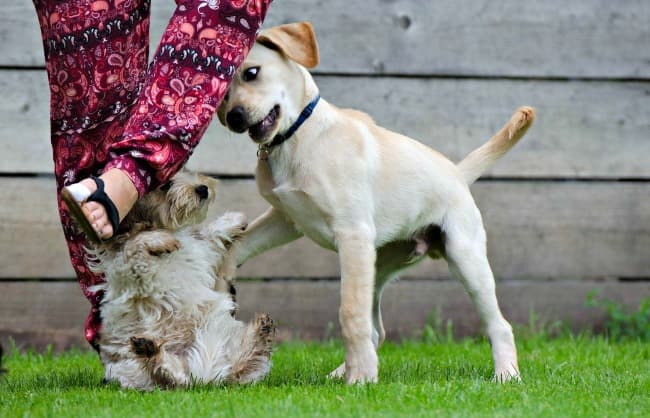
How Compatible Are They?
If you want to bring a new puppy into your family, it's easy to choose based on the 'cuteness' factor, or even on the spur of the moment, but if you want to maximize the potential for a harmonious relationship between your resident dog and the newcomer, it pays to think things through first.

Here are a few things that might help:
- A pup of the opposite sex, is more likely to be accepted without too much fuss - and there's less chance of serious conflicting erupting later on when the puppy reaches adolescence.
- An older resident dog will be less threatened by a puppy, than it will by another adult dog. A pup or adolescent will most likely accept either.
- Give a thought to size and breed characteristics. If your current dog
is from a breed with a strong prey-drive, introducing a new puppy who is a small, fast-moving breed is probably not the best idea.
- Most terrier breeds were bred to hunt
vermin of various sizes and types. If your resident dog is a terrier, or
terrier-mix, introducing a tiny, teacup chihuahua could be asking for trouble.
- Large and giant breed dogs are often docile and low-energy as adults, but they might hurt a very small puppy completely by accident. Choosing a more robust or larger breed rather than a miniature one might be wiser.
Of course, every single dog and pup is a unique individual, and these are 'generalizations'.
You know your own dog best, so choose your new family member using the understanding and knowledge you have of how he/she is likely to behave, based on past experiences and observation.
Meet & Greet!
Whatever the age, size or breed of both your resident dog/s and your new one, the initial introductions should be done under close supervision, and preferably with more than one human present.
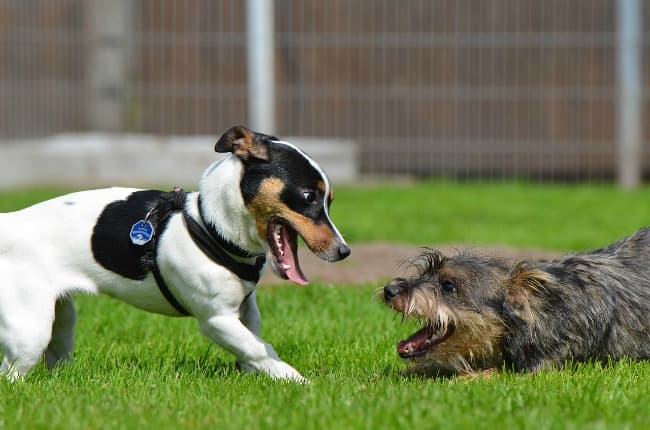
If your older dog is pretty friendly and not overly territorial, then introducing a new puppy on home territory should work.
A young
puppy is unlikely to challenge an adult dog, but it's rowdiness and
natural exuberance may make it a bit of an irritation.
Generally the resident dog will 'keep the newcomer in line', with a warning growl, or sometimes a snap, if it oversteps it boundaries.
This kind of behavior is perfectly normal, and it's best to let the dogs sort out the 'pecking order' for themselves (unless someone is really getting hurt or scared).
When the meet & greet takes place in your home, don't be tempted to make a whole bunch of fuss over the newcomer, while ignoring the older dog/s.
Puppies are so precious, that it's hard not to 'ooh and aah' over them, but keep your adoration for those one-on-one times when your other dog isn't around.
Dogs are pack animals, and their society functions on a fairly strict, heirarchal system.
The older, more mature, stronger dog will be the dominant dog, while the new, smaller and weaker one will be lower down the ladder. If you 'coddle' and pet the younger one at the expense of the older one, you upset this natural balance.
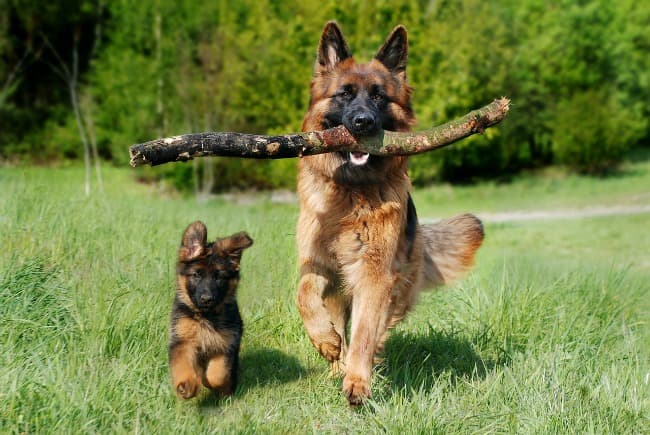
Instead, be sure to feed, pet and acknowledge the resident dog BEFORE the puppy. This reinforces their natural 'pecking order' and makes power-squabbles less likely.
However, sibling rivalry is not just for our human children!
If your resident dog is territorial, touchy or unused to other dogs, introducing him to your new puppy may go better in neutral territory.
You'll definitely need two people in this case. Take both dogs to a local park (if your puppy isn't yet fully vaccinated, try a friend or relatives house or yard instead) or somewhere similar.
Be sure they're both leashed, and then allow them to become aware of each other from a distance.
Try walking parallel to each other, but a few feet apart, to begin with. Their natural curiosity will get the better of them, and when they feel more comfortable with the presence of the other they will investigate. Wagging tails and sniffing are good signs.
If all goes well, you can try re-introducing the new puppy at home. If you're still unsure of your older dog's reaction, try putting the puppy in a fenced area or dog pen, and allow them to sniff and interact through the wire.
Be sure to have another adult present just in case things don't go smoothly. Don't use a leash on either dog within a confined space as this can lead to aggressive behavior.
When you bring home a new puppy, always make sure you have enough of toys, bones, beds, bowls, treats etc. to go around.
Minor squabbles over possessions do happen, and generally the older, resident dog will put the 'young 'un' in his place, but always supervise playtimes at first as this kind of conflict can escalate quickly.
How To Handle Squabbling
An argument between two dogs can be quite unnerving, especially to new, inexperienced puppy parents, and when introducing your puppy to the other family dog/s, you will most likely see at least a couple of 'disagreements'.
Growling, lip-curling and even a snap isn't unusual (on the part
of the older dog), the puppy will understand this well, as it's exactly
the way him mom would discipline him.
Most times the puppy will show submissive behavior (lay down, roll over to show his belly, widdle a little etc.), his apology will be accepted and peace will return.
If the new dog is an adolescent or mature adult, it may be a little more complicated. In most cases, inspite of considerably more growling and posturing, the dogs will sort it out between themselves.
Interference by their humans will be counter-productive and more than likely make matters worse.
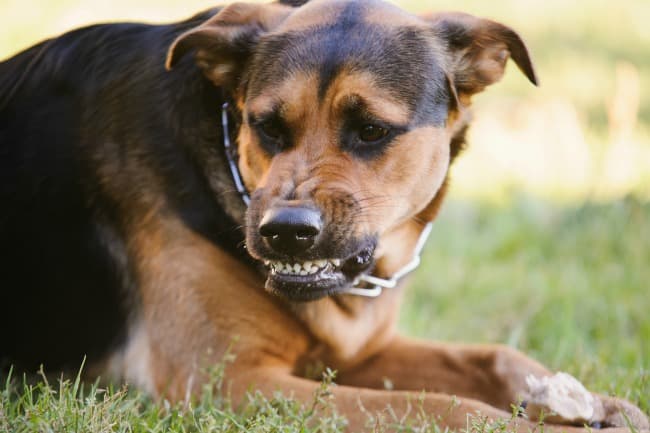
But there are occasions when one two dogs just can't get along and the fights extend beyond posturing.
If this kind of rivalry turns into snarling and biting (I mean blood-drawing bites, not nips) you have to take a stand. Keep the dogs separated and only let them interact through fencing as talked about above.
After a while they may relax and become more accepting of each other, but if this doesn't happen you may have to seriously consider finding another home for the newest arrival.
you might also like...
- Home
- First Days At Home
- Introducing a New Puppy
FTC Disclosure: Some pages on this site contain affiliate links. I may earn on qualified purchases.



